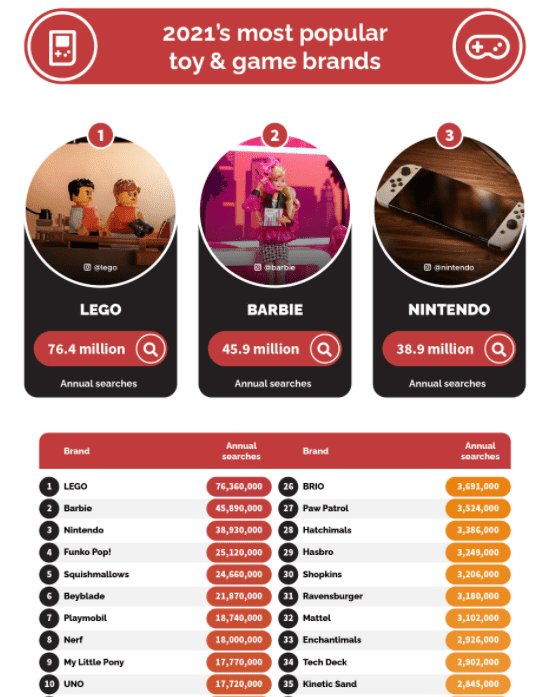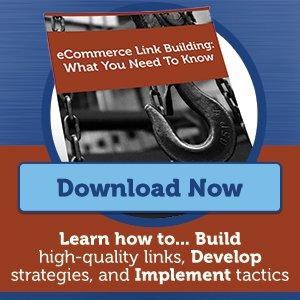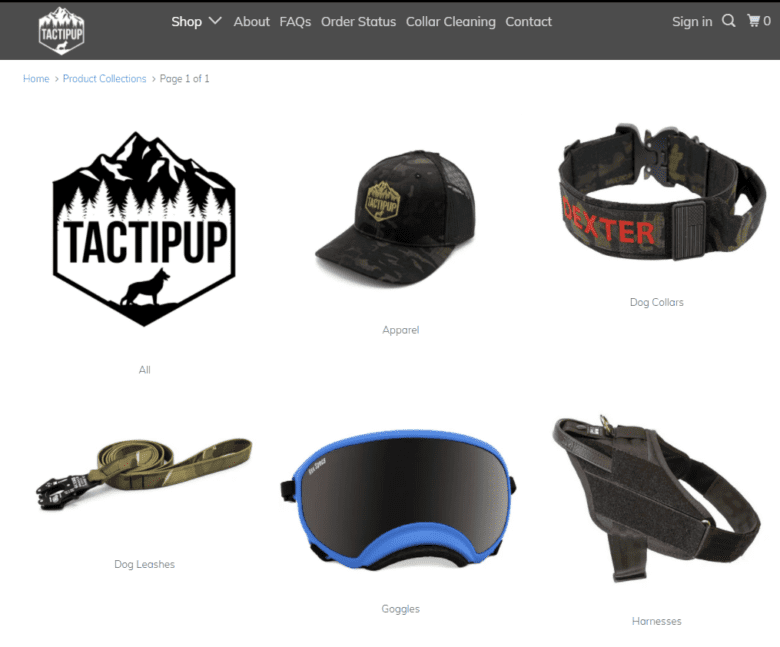When it comes to digital content and organic success, Google often claims “if you write it, the links and shares will come.”
But we all know that’s not quite true.
Thought leadership and virality aren’t gained by passively throwing your content into the black hole of the internet. To succeed, your brand needs to take a more active role in content promotion. And not just social media, either; we’re talking about digital PR.
I know many a digital marketer (myself included) who cringes at the prospect of cold outreach, whether for guest posting, linking opportunities, or otherwise. But, with the right approach, it doesn’t have to involve endless pitching with nothing to show.
In this guide, we’ll help your eCommerce business plan its digital PR campaigns, with five strategies for success to build valuable links, brand awareness, and (ultimately) product sales.
What is Digital PR?
Digital PR is very similar to traditional public relations efforts. Through strategic planning, press releases, and pitching, brands connect with online editorial channels to raise brand awareness, get media coverage, and build high-quality links.
There’s no “single” way to conduct digital PR. Some brands may focus on influencer partnerships, while others may pursue paid sponsorships. For the sake of this article, we’ll focus on editorial digital PR – that is, internal content efforts spent to get mentions in external online content, like news site reports, blogs, reviews, and more.
Often, editorial PR pitches involve content inspired by data — “the most popular dresses this year,” “favorite candies in each U.S. state,” etc. — like this list of top toys by search volume, as researched by secondhand ad directory for-sale.co.uk:

(We’ll dive more into these content opportunities below.)
Where traditional print PR is transparently self-serving (ex: “BRAND announces new scholarship programs”), digital PR focuses more on serving the needs of those being pitched to. When it comes to eCommerce opportunities, this means consumers — albeit, usually a larger demographic than the brand’s own.
Its Role in Link-Building Strategies
Here at Inflow, we preach white-hat link-building strategies: creating good, authoritative content that naturally attracts attention and high-quality backlinks over time.
But, if you really want to step up your eCommerce link-building strategies, you’ll likely need to invest the time and energy into digital P.R., too.
Google’s guidelines on “quality links” have evolved so much over the years that even the trusty guest blog post doesn’t always work. Easy-to-get backlinks (read: link swaps or paid links) are frequently targeted by link spam updates and, today, will likely do your site more harm than good in the long run.
On the other hand, links built from digital PR (like the links built from authoritative content marketing) aren’t easy to get. It will take a great deal of effort for what seems like little results.
Alas, it’s the current world of digital link building.

Learn more about current link-building best practices in our detailed eBook.
Digital PR Strategies for eCommerce Businesses
eCommerce may not seem like the easiest space for data-driven content. But, if you put on your thinking cap, you can discover many opportunities for your brand.
To help you get started, we’ve gathered five must-have strategies to find success:
- Brainstorm topics.
- Use existing data.
- Take advantage of your email list.
- Use trends and newsworthy topics
- Always share on your site first.
1. Brainstorm topics directly and tangentially related to your product.
Digital marketers often get stuck in this first phase, especially if their eCommerce brand sells less-than-flashy products.
Let’s say your store sells extremely niche products, like our client Tactipup, which sells military-grade dog collars, harnesses, and leashes. You may think your only content would revolve around your products (how much of each you’re selling, which dog names are the most popular based on requested embroideries, etc.).

But, dig deeper and think broader, and you can expand your topics based on audience research, behavior, and more.
Tactipup has already identified their target audience is highly patriotic, supportive of police, and unapologetic in nature (clearly seen in their patches offerings). So, in addition to content topics for dog-owners and lovers, Tactipup could also brainstorm data-driven topics on:
- Outdoor activities and hobbies (ex: “favorite outdoor activities to do with dogs”)
- Patriotic trends (ex: “states that fly the most American flags”)
- Hunting and fishing (ex: “popular places to hunt big game during the fall”)
When in doubt, don’t be afraid to branch out from your niche branding. Remember: Digital PR campaigns need to appeal to a wider audience than just your established customers.
Pro Tip: If you’re running a blogging strategy for your eCommerce site, you’ll already have a good grasp of tangential content topics, based on keyword research, audience data, and top-performing articles. This is where collaboration between your search engine optimization (SEO) and digital PR teams can be helpful; both can inspire ideas for the other and work together on a strategy for maximum brand exposure.
2. Use existing customer and product data.
Most eCommerce stores have a wealth of data at their fingertips. All it takes is a new perspective to turn that into content opportunities.
Brands regularly analyze data for number of purchases, average order value, and monthly revenue, since it all affects the bottom line. But, instead of getting caught up in those “big” metrics, we suggest going granular. Look at details like customer address, order time, and others to uncover potential trends that can be pitched to online publications.
Even better? Combine multiple data points (ex: customer addresses and browsing history) for richer content opportunities.
Here’s an example: Say your online store specializes in engagement rings. You could track customer buying behavior from first touch to purchase to conclude the average browsing timeline by state, but you might also uncover more interesting insights — like a growing number of women buying their own engagement rings or increasing interest in non-traditional stones, both of which may indicate larger societal trends.
Pro Tip: You can also combine your customer/product data with data gleaned from public sources, like the Bureau of Labor Statistics, Census.gov, and Google Trends. If you have subscriptions to keyword research tools, incorporate that data, as well.
3. Take advantage of your email list for survey responses.
Don’t have the data you need and can’t find it in a public database? Consider surveying your current customers instead.
Of course, the statistical significance of your survey will depend on how many email subscribers you have (please don’t go sharing a data report that only includes 25 responses). But, if you have a hefty email list, you could begin your surveying with a strategically sent email.
Use this approach sparingly, however. Remember that your customers signed up for your emails for product and brand alerts. Overloading them with survey requests will only cause you to lose subscribers.
Should you need more responses for your survey, consider using your social media accounts, internal staff communications, and other avenues to gather more responses.
Pro Tip: If your budget allows, incentivize your email subscribers into taking your survey by offering a discount code or gift card to your store.
4. Use trends and newsworthy topics to your advantage.
Before starting any digital PR campaigns, always ask yourself: Why is this topic important now?
Because it works at any time of the year, evergreen content can be attractive. But, for the same reason, it can be easily ignored by editorial teams. If you want your content to be covered, give journalists an incentive for doing so now.
Here’s an example: Say you sell a wide variety of toys, like our client Dollar Days. While you could pitch “most popular toys of 2021” at any point in the year, you can make that topic even more attractive by tailoring it to the holidays: “Most Popular Toys to Give This Christmas Season.”
You can uncover trending and newsworthy topics with tools like Google Trends, BuzzSumo, and more.
Pro Tip: Find ways to re-pitch your data throughout the year by incorporating trending topics, and you can change an evergreen topic into a newsworthy one, no additional work required.
5. Always share the content on your site first.
Unless your data insights deserve and demand an “exclusive reveal” from a high-authority media platform, you should publish this content on your own website first. It’s a great addition to your content marketing strategy and boosts your chances of multiple PR links (for example, to that specific web page and your homepage).
With detailed keyword research and article optimization, you can build organic traffic to your site, too. Depending on your content topic, your data report could also function as a buying guide that’s served up in the SERPs — an increasingly crucial part of eCommerce SEO strategy.
Remember: The goal here is to gather backlinks in a natural, authoritative way. Having an actual blog to link to (rather than your homepage) is highly recommended for the best referral traffic.
Pro Tip: Keep your URLs generic. Even if your data is from a particular time period (“most popular walking shoes in 2021”), don’t add a date to your URL. That way, you can go back and update your data over time, without losing valuable website traffic, page rank, and content authority.
The Final Step: Kickstarting Your Campaigns
Here’s the truth: If you want to find success with digital PR for your eCommerce business, you’ll need to put in a lot of effort. Between brainstorming, creating high-quality content, and pitching your topic to online publications, it takes a lot of hard work to get it right — and to get the high-PR backlinks you’re ultimately searching for.
For this reason, many marketers outsource these tasks to a digital PR agency. We recommend looking for experts in the field, who can supply real-life client examples of previous content successes. Avoid link-building agencies who only perform outreach; these agencies frequently toe the line between white- and black-hat techniques and could do more harm than good.
Finally, be very clear on which services you want. Digital PR is a grand niche, and you don’t want to end up paying two separate agencies for overlapping services (or services you don’t want in the first place!).
On the other hand, if you have the staff and bandwidth to create your own content for digital pitching, several services can help you build your pitch list and automate emails to prospects:
Remember: Always research a journalist or publication before pitching. Make sure they actually cover the topic your content falls under, and double-check that they haven’t published a similar article in the past year or so. No one wants to promote a copycat study!
Dip Your Toes into Digital PR With Organic Link-Building
Not ready for the commitment of full-fledged digital PR campaigns? You can still find link-building success with natural strategies that generate a faster rate of return (and, in most cases, are part of your existing SEO campaigns):
- Creating thought leadership content and building high domain authority
- Replying to reporter requests through HARO (Help a Reporter Out)
- Monitoring brand mentions and trending topics
- Evaluating backlinks to allow only the most credible to your site
If your current SEO agency doesn’t include these strategies, Inflow’s team is here to fill the gap. To learn more about our white-hat linking strategies, contact us anytime. We’re happy to evaluate the possibilities for your website and create a personalized plan for your goals.
In the meantime, boost your current linking approach with our other helpful resources:











0 Comments